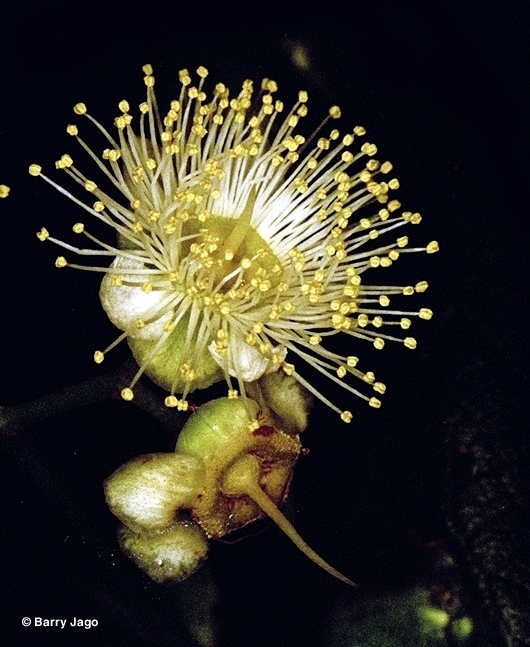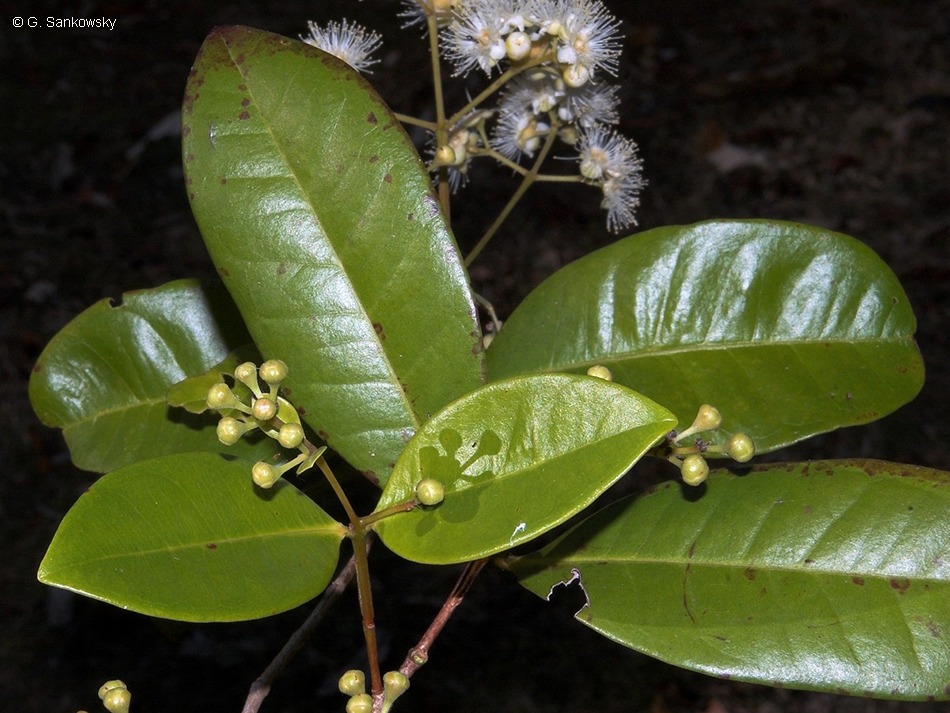Australian Tropical Rainforest Plants - Online edition
Backhousia bancroftii F.M.Bailey







Bailey, F.M. (1886) A Synopsis of the Queensland Flora, Supplement 1 : 24. Type: Johnstone River.
Johnstone River Hardwood; Langdon's Hardwood
Pale brown, hard, brittle stripes in the blaze.
Oil dots visible with a lens if not visible to the naked eye. Leaf blades about 55-95 x 25-50 mm. Midrib depressed on the upper surface of the leaf blade. About 9-15 main lateral veins forming loops or an intramarginal vein well inside the margin, sometimes with another smaller vein further out. Younger leaf bearing twigs 4-angled or shortly 4-winged.
Petals about 5 mm long. Anthers about 0.6-0.8 mm long.
Fruits about 5-7 mm diam., excluding the calyx lobes.
Produces a useful general purpose construction timber.
Wood specific gravity 1.00. Cause et al. (1989).





